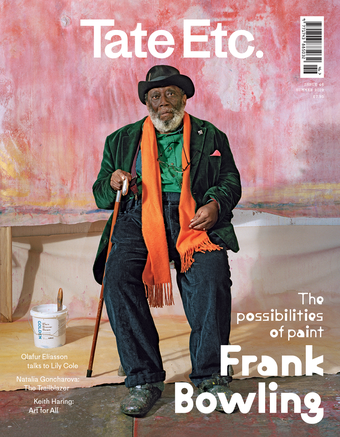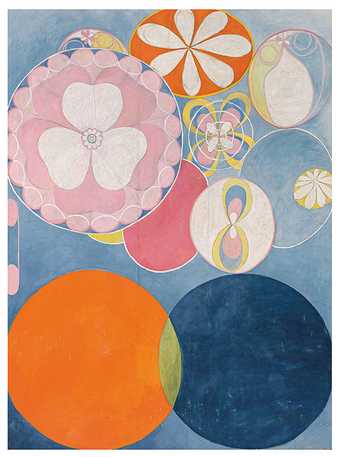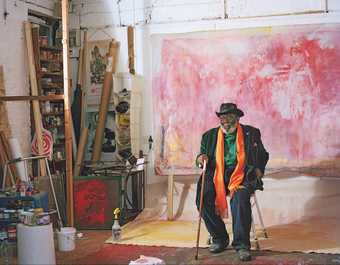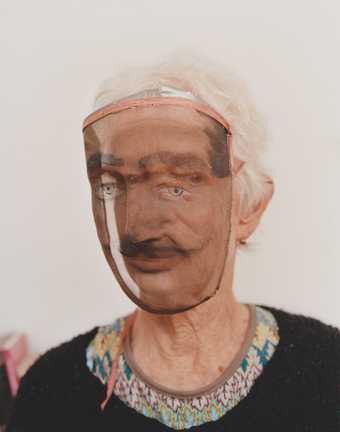
Huguette Caland wearing one of her signature kaftans in her first solo exhibition at Dar El Fan, Beirut, 1970
Courtesy the artist
Huguette Caland was born in Lebanon in 1931 where her father, Bechara el-Khoury became the country’s first president after the nation won independence from France in 1943. Her childhood milieu was decidedly cosmopolitan – even old-world aristocratic – and couched in the rituals and systems of a diplomatic environment. Possessing an artistic sensibility from an early age, she started painting aged only 16 under the guidance of the Italian artist Fernando Manetti.
She studied law at the Université Saint-Joseph in Beirut, and later fell in love with the nephew of one of her father’s chief political rivals. Worse, for a daughter of the Lebanese Republic, she married a former coloniser, a Frenchman. Then she took his best friend as her lover. They were a very public trio, scandalising polite society not only by their presence, but by their frequent appearance in her art.
In 1964 Caland lost both of her parents in quick succession. By this point she was also a mother with three young children, yet she still felt the urge to learn and became a student in the fine art department at the American University of Beirut for the next four years – a place that was a decade in to wild experimentation with progressive arts education.
Here, she befriended a wave of artists, writers, poets and misfits, both local and foreign. Her former classmates remember her as loud, vivacious and large, the latter being especially notable in an era when women were generally expected to remain thin. It was not so much to hide her body, it seems, as it was to free it that she began walking around town in her own stitched and painted kaftans, wearing nothing underneath.
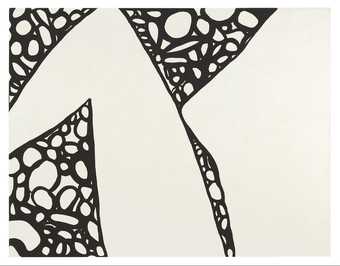
Huguette Caland, Helen 1967, oil paint on linen, 69.4 x 88.5 cm
© Huguette Caland, courtesy the artist
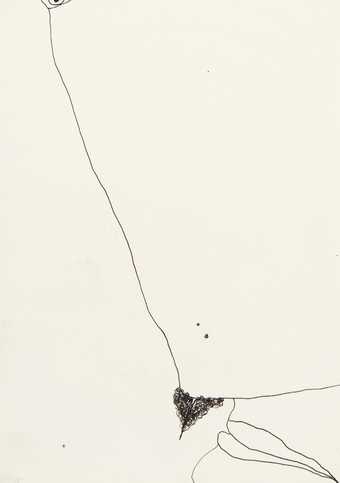
Huguette Caland, Flirt VI 1972, ink on paper, 17.1 x 12 cm
© Huguette Caland, courtesy the artist
Her particular sensual style of painting was apparent early on: many of her works, while verging on abstraction, were based on bodily forms. In Helen 1967, she painted the breast and knee of her best friend and teacher, the Lebanese-American artist Helen Khal, reverse-silhouetted against a background of anthropomorphic circles, like cells multiplying and dividing. Similarly, Caland’s nimble, sinuous line drawings from the 1970s captured the erotic entanglements of stylised bodies, limbs, faces and hair, often stretching out along a single, humorous line.
She carried on painting for a number of years and then, in 1970, announced at one of her raucous dinner parties – to the shock of her gathered friends and family – that she was leaving all of them, husband included, to live in Paris and pursue her art.
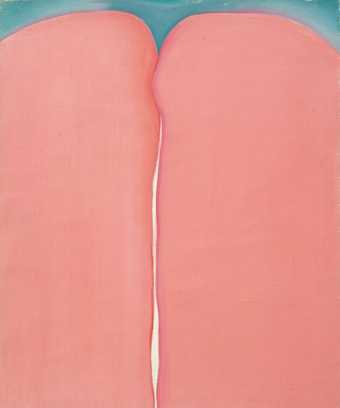
Huguette Caland, Bribes de corps (Body Parts) 1973, oil paint on linen, 45.7 x 38.1 cm
© Huguette Caland, courtesy the artist
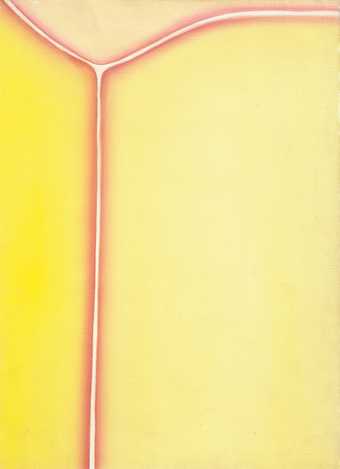
Huguette Caland, Bribes de corps (Body Parts) 1973, oil paint on linen, 48.2 x 34.9 cm
© Huguette Caland, courtesy the artist
Her paintings became both bigger and bolder, while her sense of colour grew as important as her erotic line, as seen in her Bribes de corps (or Body Parts) series begun in 1971, in which she set mounds of hot pink flesh and scarlet crevices against vividly blue, green and turquoise backgrounds. Here she would also meet and live with the Romanian sculptor George Apostu. Then, in 1987, Caland moved to Venice, California, where she became a prominent figure in the art community until 2013, when she returned to Beirut to visit her sick husband, and has lived there ever since.
With such a biography, where does one place the artist who lived and worked so fully and confidently on three different continents, yet was, at the same time, something of a misfit in the art scene? As an artist as well as a public figure, Caland has always been known in Lebanon, though perhaps more for her persona than her painting. In Paris she absorbed many influences but was never embraced by the French art establishment. Her work went oddly underexposed in California. Yet now she is rightly receiving widespread critical acclaim for her art, which has drawn so consistently and enthusiastically from the wells of high art, humble craft and caricature – with threads of humour, sexual expression and formal invention that she so brilliantly articulates.

Huguette Caland, Untitled 1984, oil paint on linen, 45.7 x 54.6 cm
© Huguette Caland, courtesy the artist
Huguette Caland, Tate St Ives, 24 May – 1 September, curated by Anne Barlow, Director, Tate St Ives.
Kaelen Wilson-Goldie is a writer based in New York and Beirut.

